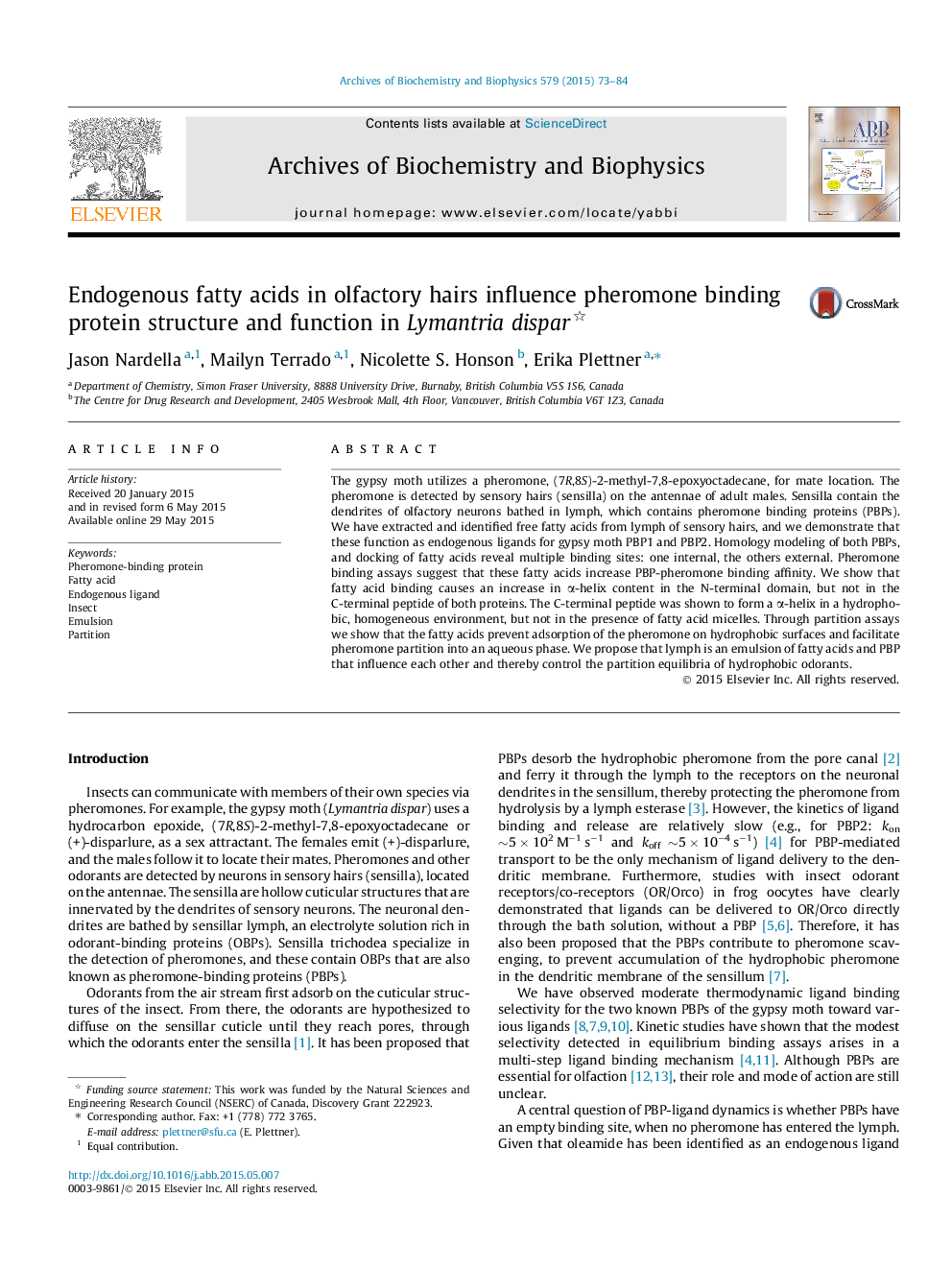| Article ID | Journal | Published Year | Pages | File Type |
|---|---|---|---|---|
| 1924911 | Archives of Biochemistry and Biophysics | 2015 | 12 Pages |
•Free fatty acids were isolated and quantified from the sensillar lymph.•Endogenous fatty acids bound to LdisPBPs were identified and quantified.•Pheromone binding increased with the addition of fatty acids.•PBPs and fatty acids minimized pheromone adsorption on solid surface.•PBPs and fatty acids facilitated pheromone partition in the fluid phase.
The gypsy moth utilizes a pheromone, (7R,8S)-2-methyl-7,8-epoxyoctadecane, for mate location. The pheromone is detected by sensory hairs (sensilla) on the antennae of adult males. Sensilla contain the dendrites of olfactory neurons bathed in lymph, which contains pheromone binding proteins (PBPs). We have extracted and identified free fatty acids from lymph of sensory hairs, and we demonstrate that these function as endogenous ligands for gypsy moth PBP1 and PBP2. Homology modeling of both PBPs, and docking of fatty acids reveal multiple binding sites: one internal, the others external. Pheromone binding assays suggest that these fatty acids increase PBP-pheromone binding affinity. We show that fatty acid binding causes an increase in α-helix content in the N-terminal domain, but not in the C-terminal peptide of both proteins. The C-terminal peptide was shown to form a α-helix in a hydrophobic, homogeneous environment, but not in the presence of fatty acid micelles. Through partition assays we show that the fatty acids prevent adsorption of the pheromone on hydrophobic surfaces and facilitate pheromone partition into an aqueous phase. We propose that lymph is an emulsion of fatty acids and PBP that influence each other and thereby control the partition equilibria of hydrophobic odorants.
